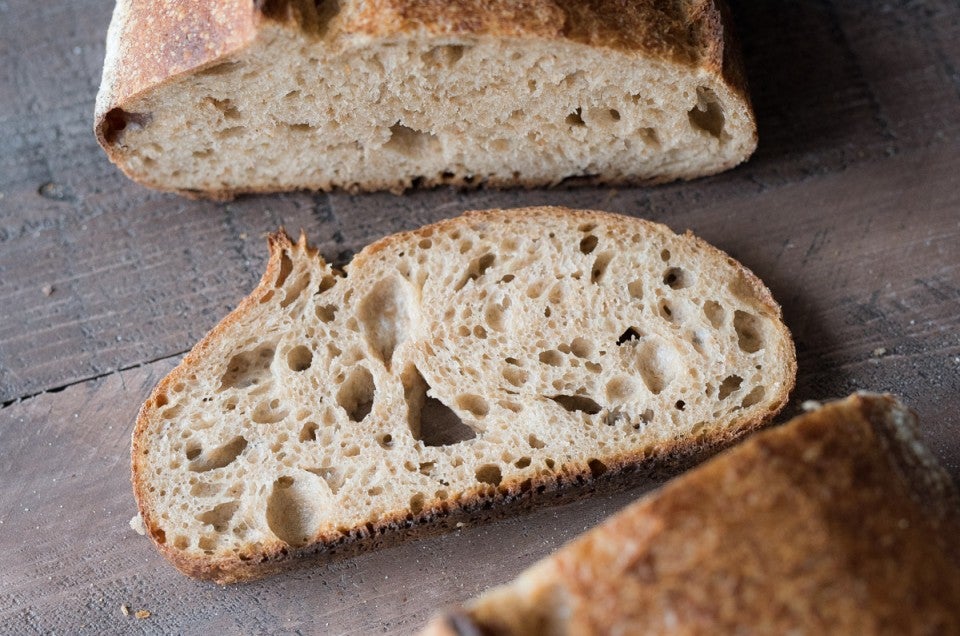


This is the second post in a series on baking with fresh-milled flour.
Few things can compare to baking with fresh-milled flour. When mixed with water, the striking aroma, soft texture, and creamy color excite the senses.
Milling flour at home requires a little extra time but it's worth it for the added flavor and nutrition. This is especially true when milling spelt flour: the naturally sweet, nutty flavor is amplified further when it’s fresh-milled and added to dough. In this fresh-milled spelt sourdough recipe, we will take this a step further by incorporating this often overlooked ancient grain in two forms: as fresh-milled flour and fresh-cracked grain soaker.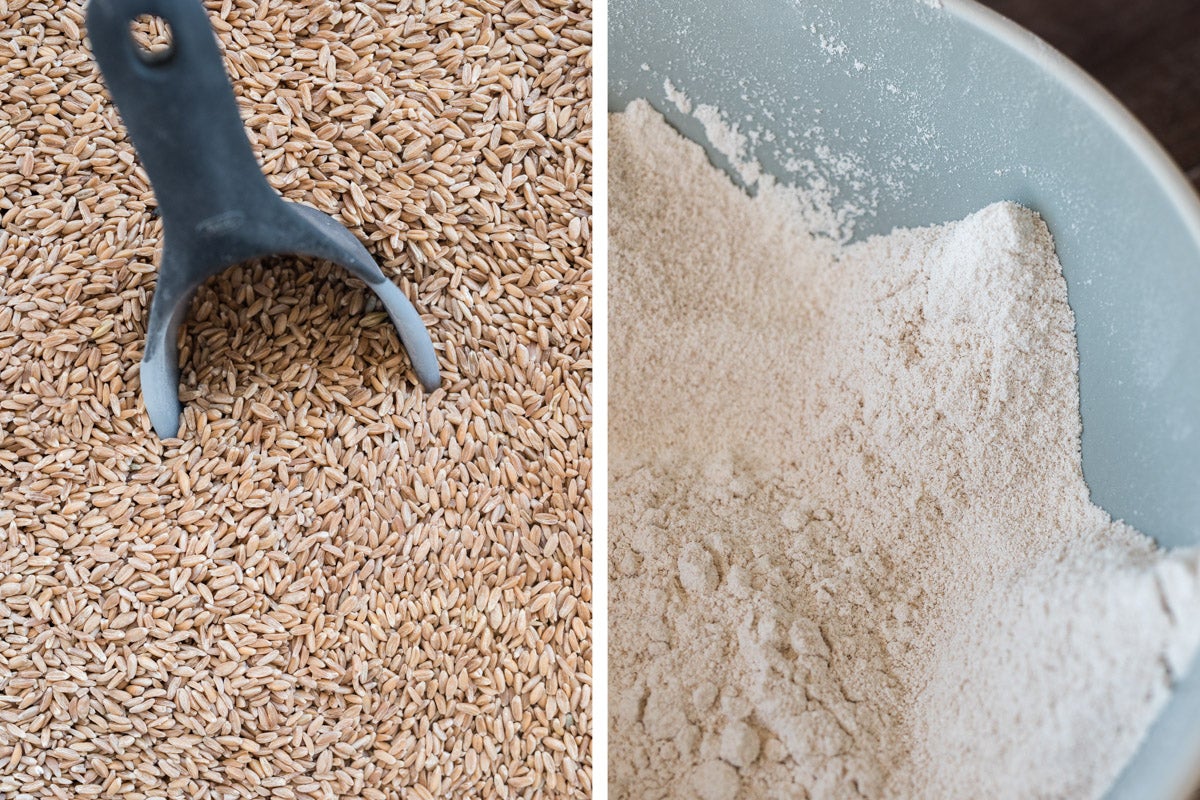
Spelt is an ancient species of the common modern wheat used today and it has different physical and baking characteristics. When used in dough, you'll notice it’s not able to handle the same high hydration as traditional wheat. Because of this, I will typically reduce the amount of water in dough when replacing modern wheat with spelt.
Additionally, spelt has extreme extensibility (the ability for dough to stretch without tearing), which contributes to a more loose and stretchy dough overall, but also aids in attaining a soft and porous crumb. Furthermore, you'll notice the interior texture of your loaves will be incredibly tender and almost melt in your mouth.
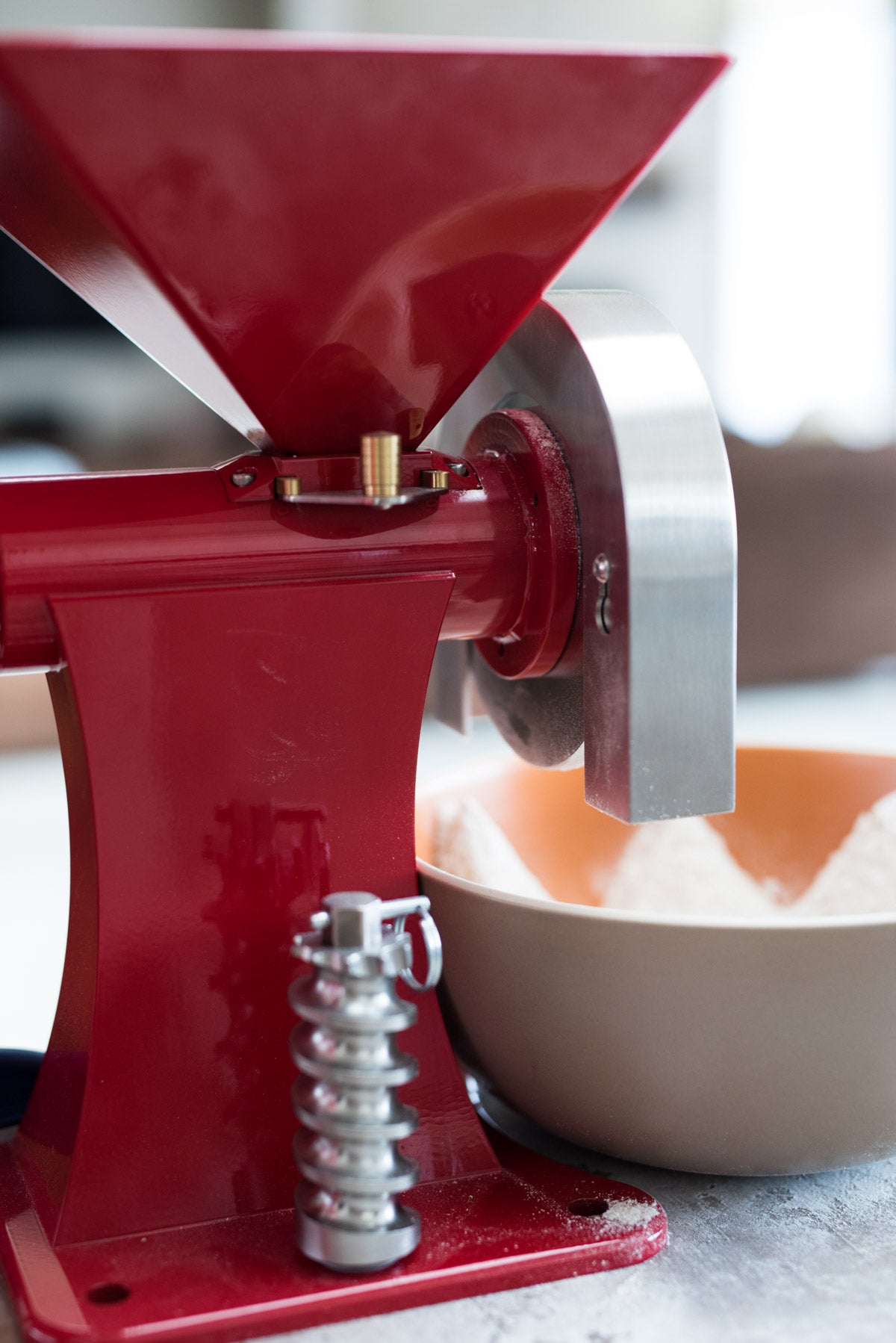
When milling spelt, I mill the grain as fine as my hand-operated mill will permit. The texture of the resulting flour is similar to a fine powder with only small, scattered bran and germ particles visible.
I’ve found the best performance in my baking comes when using fresh flour that's milled very fine – the resulting bread usually has more volume and more stable fermentation qualities. Further, bran/germ pieces can act like little knives, slashing the network of gluten that develops during mixing, which can cause a more dense loaf of bread. Reducing the size of these pieces helps reduce the cutting action and leads to a more desirable loaf.
Some bakers prefer to age their fresh-milled flour a day or more before using, but I mill it the morning I mix it into a dough. Why? As the milled flour is exposed to oxygen, vital nutrients and oils begin to oxidize and dissipate. Using the flour soon after milling ensures we retain as much nutrition and flavor as possible.
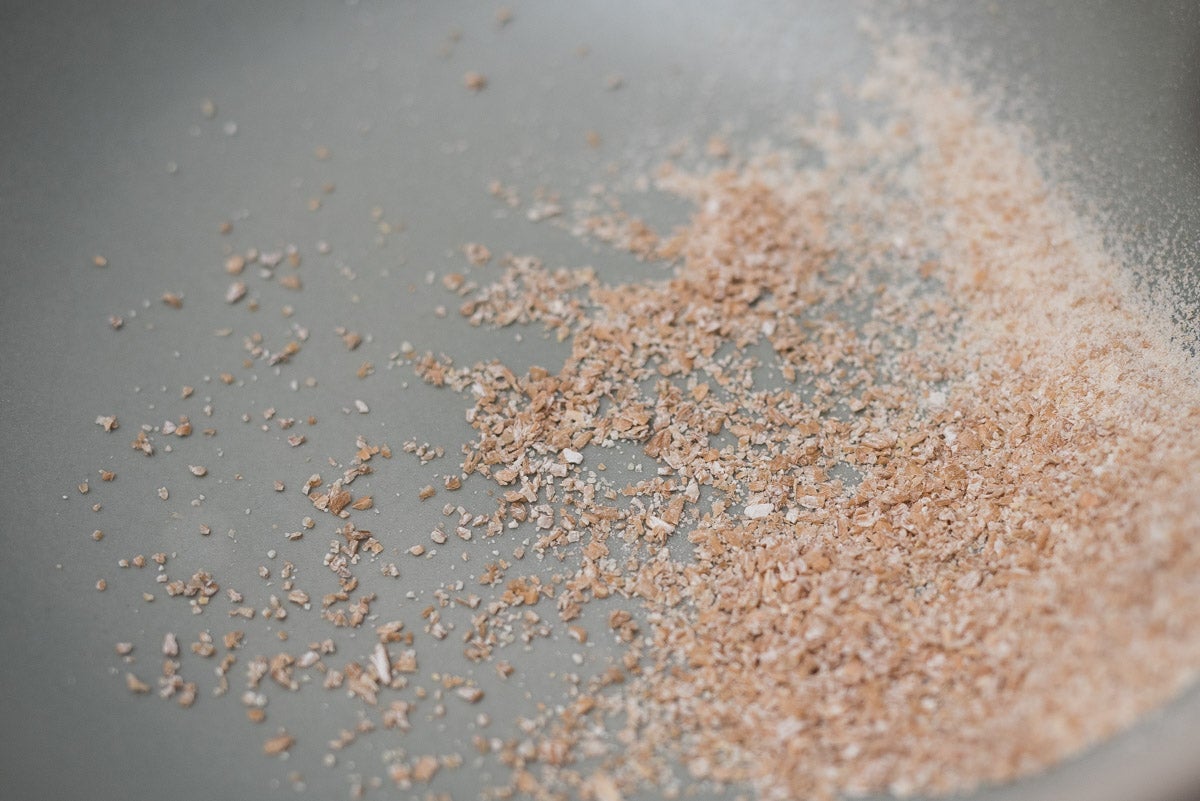
Conversely, for the cracked grain soaker, I dial my flour mill to a very coarse level so the berries that pass through the rotating burrs spit out in irregular shapes resembling polenta or corn grits. These whole-grain bits are then added to boiling water, and soaked for a number of hours to help soften (there’s nothing worse than eating hard bits of grain in baked bread).
Additionally, soaking the cracked grain helps prevent excessive cutting of the gluten network and reduces the amount of water the grains could leach out of the dough during bulk fermentation and proofing.

This recipe makes two 1-kilogram loaves. You can halve the recipe to make only a single loaf, but it’s best to still make the levain, with specified quantities, as described below.
The levain calls for active, mature (a.k.a. ripe, at peak) sourdough starter. So if you don’t feed your starter every day on a regular basis, take it out of the fridge and feed it at least twice, once in the morning and once at night, before using it. If it’s been refrigerated without feeding for awhile, you may need to give it several feedings over several days to bring it up to strength. Your goal is a starter that doubles in size readily, and looks quite active.
This recipe utilizes a small levain percentage, partly because the fermentation activity is typically increased when using fresh-milled flour, but also because using a mature, active levain has quite a bit of fermentation strength from the get-go. If you’re not using fresh-milled flour, or you notice your dough is not progressing according to the timeline below, don’t worry, your dough may just need additional time to fully ferment and/or proof.

Using a mature sourdough starter, mix together in a small container:
52g (scant 1/4 cup) mature (ripe, fed) sourdough starter
26g (1/4 cup) King Arthur Whole Wheat Flour
26g (scant 1/4 cup) King Arthur Unbleached Bread Flour
52g (3 1/2 tablespoons) water*
*If your kitchen is cold, use warmer water (up to 90ºF) to help the levain stay warm.
Keep the levain somewhere warm, around 76ºF to 80ºF, for about 3 to 3 1/2 hours until mature.
While the levain is maturing, proceed with making the cracked grain soaker, milling the flour and preparing the dough for autolyse.
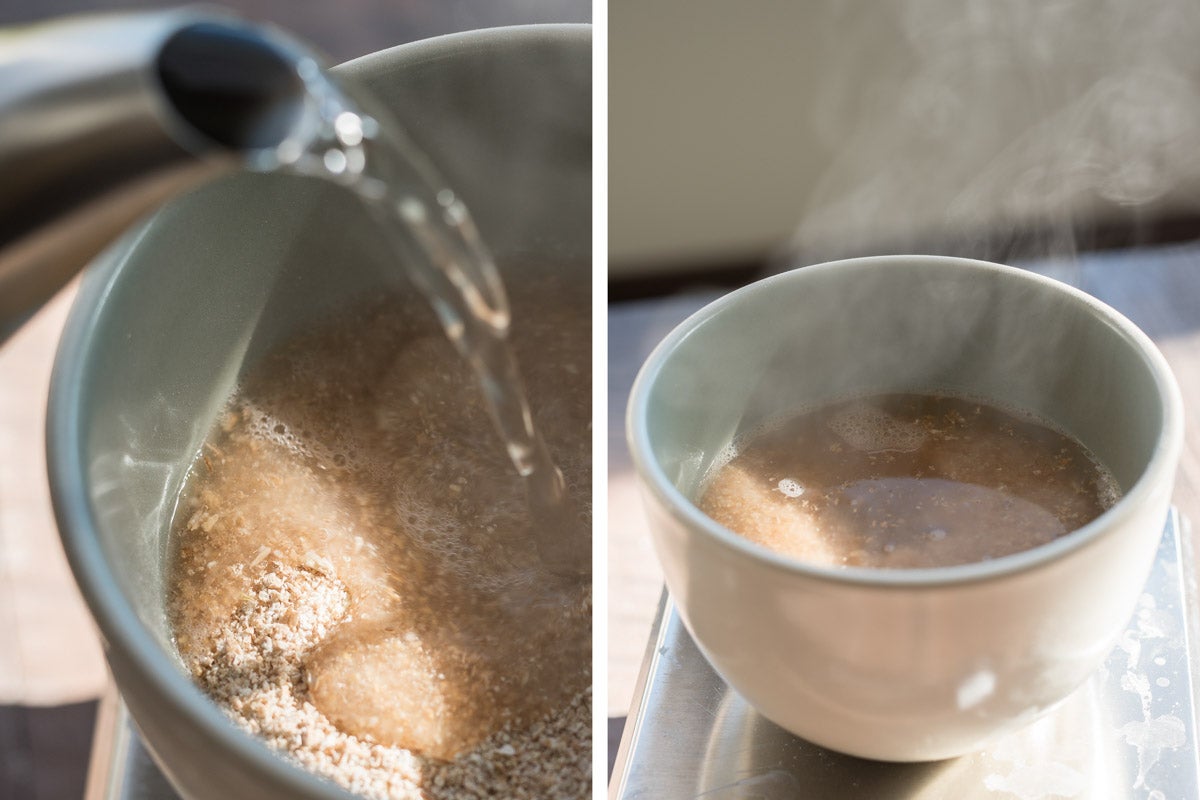
Using a home flour mill, or high powered blender, coarsely crack 172g (a scant 1 cup) whole spelt berries until the texture resembles polenta or corn grits. Transfer cracked grains to a heat-resistant bowl.
Bring 215g (1 cup less 1 tablespoon) water to a boil. Once boiling immediately pour the water over the cracked grains and stir until completely hydrated. Cover to prevent excessive moisture loss and let cool at room temperature* until needed at the beginning of bulk fermentation.
*If ambient room temperatures are excessively warm, add part, or all, of the salt called for in this recipe to the soaker itself. Adding salt will help prevent enzymatic activity in the soaker that can lead to an undesirable sour flavor.
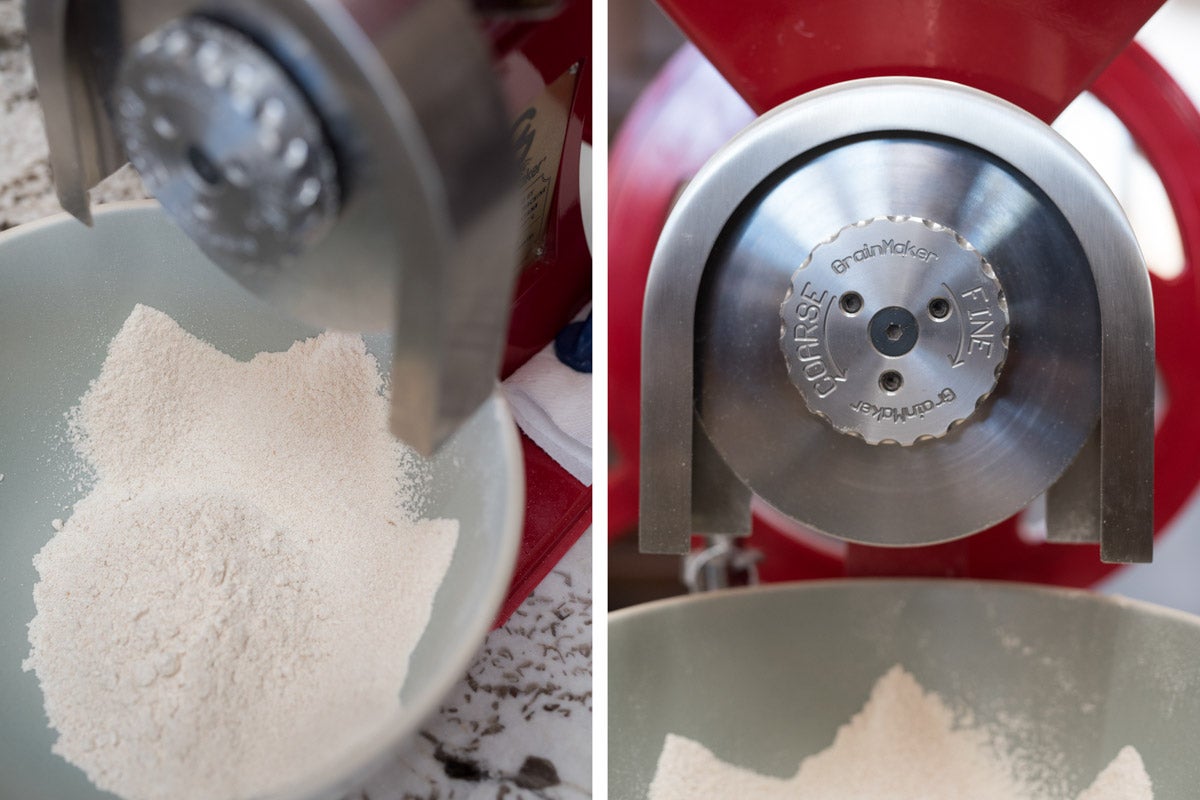
Using a home flour mill, grind 191g (scant 1 cup) whole spelt berries into fine flour.
Note that my fresh-milled spelt absorbs more water than aged spelt. If you’re not using fresh-milled spelt, withhold some water from the mix and add it in over the course of mixing to avoid over-hydration.
This recipe utilizes an autolyse technique that allows the mixed flour and water (no levain or salt) time to rest after incorporation. This resting period activates enzymes present in the flour, giving them time to break down complex sugars into simple sugars. These sugars are then more available for use during fermentation, which ultimately leads to more flavorful, better-colored bread.
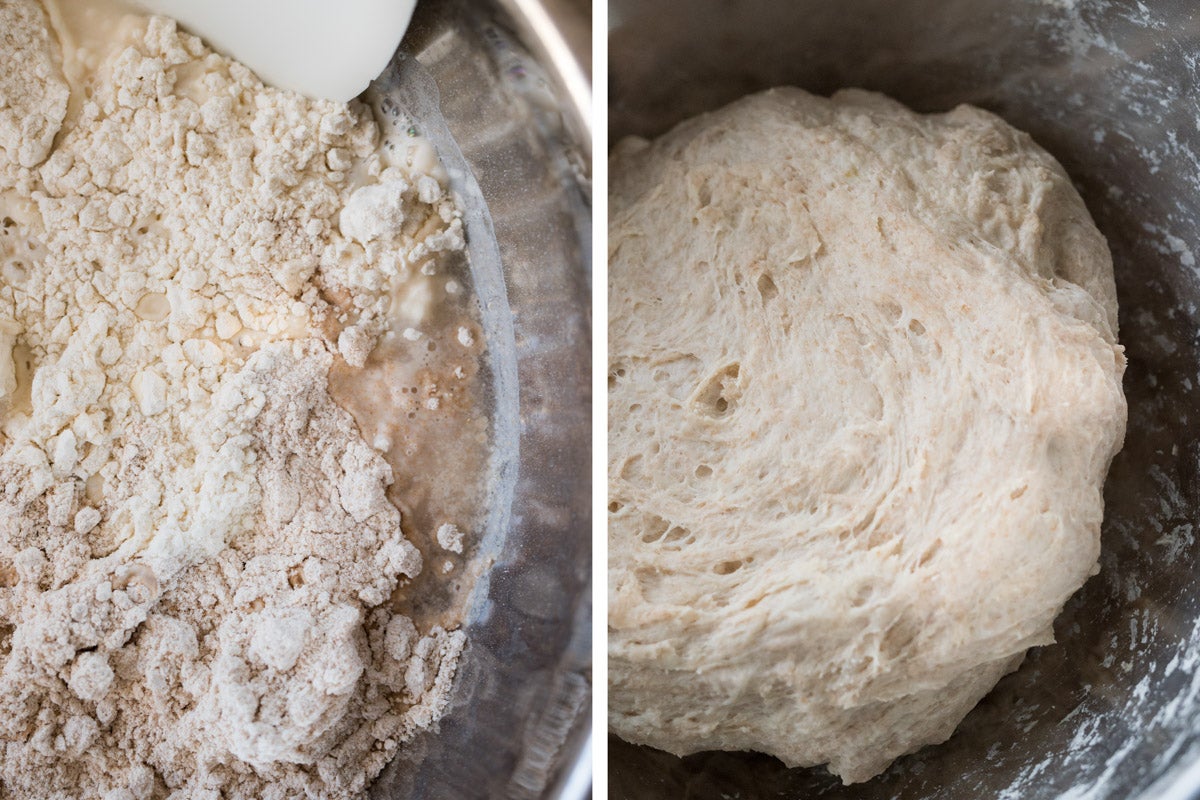
Place the following in a mixing bowl and mix by hand until all the dry bits are incorporated:
478g (4 cups) King Arthur Unbleached All Purpose Flour
165g (1 1/3 cups) King Arthur Unbleached Bread Flour
70g (1/2 cup + scant 2 tablespoons) King Arthur Whole Wheat Flour
191g (scant 2 cups) fresh-milled spelt flour*
507g (2 1/4 cups) water
*For the best flavor, we strongly suggest you fresh-mill the spelt, but you can substitute other spelt flour.
The final target dough temperature for this bread is 78ºF to 80ºF. If your kitchen is cold use warmer water, to adjust the temperature of the dough by the end of mixing.
Cover the mixing bowl and let the levain rest for 3 hours at room temperature, until it's ready to be used.

After the 3-hour autolyse, and when the levain is mature, add all of the mature levain; 20g (about 3 1/2 teaspoons) salt, and the entire cracked grain soaker to the mixing bowl, along with 30g (2 tablespoons) water. The soaker may feel firm, but the added water will help incorporate and mix everything together.
Mix and knead the dough by hand, or with a stand mixer fitted with a dough hook, until the dough is slightly smooth and shows some strength, about 3 to 4 minutes.
Cover the mixing bowl and let the dough rest for 10 minutes to relax.
Mix for an additional 3 minutes (less if using a stand mixer) until the dough becomes smoother in consistency and starts to show further strength.
Transfer the dough to a tub or thick-walled bowl for bulk fermentation.
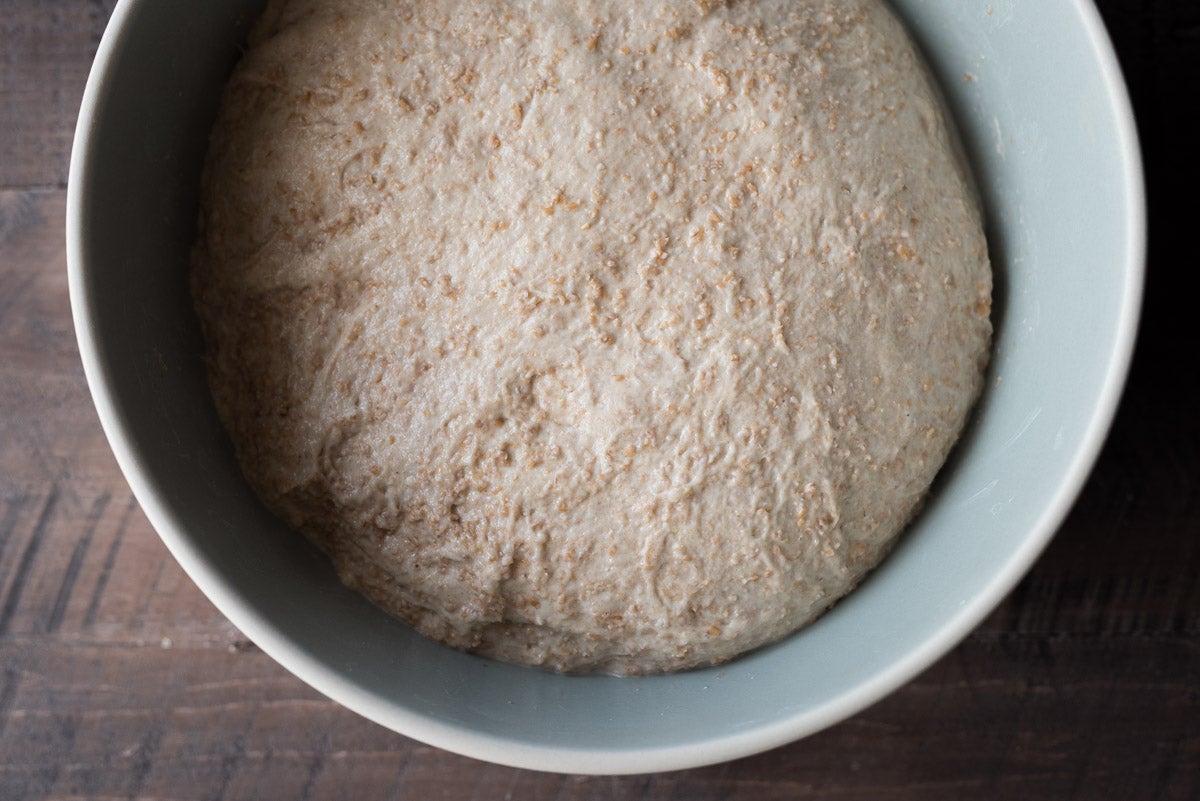
At about 78ºF ambient temperature, bulk fermentation should go for about 3 hours. Give the dough one set of stretch and folds during this period. For the set, stretch the north side up and fold over to just short of the south side, then repeat for the south, east and west sides for a total of four folds (which equals one set). If the dough feels excessively slack or wet at the end of this set, perform an additional set 30 minutes later.
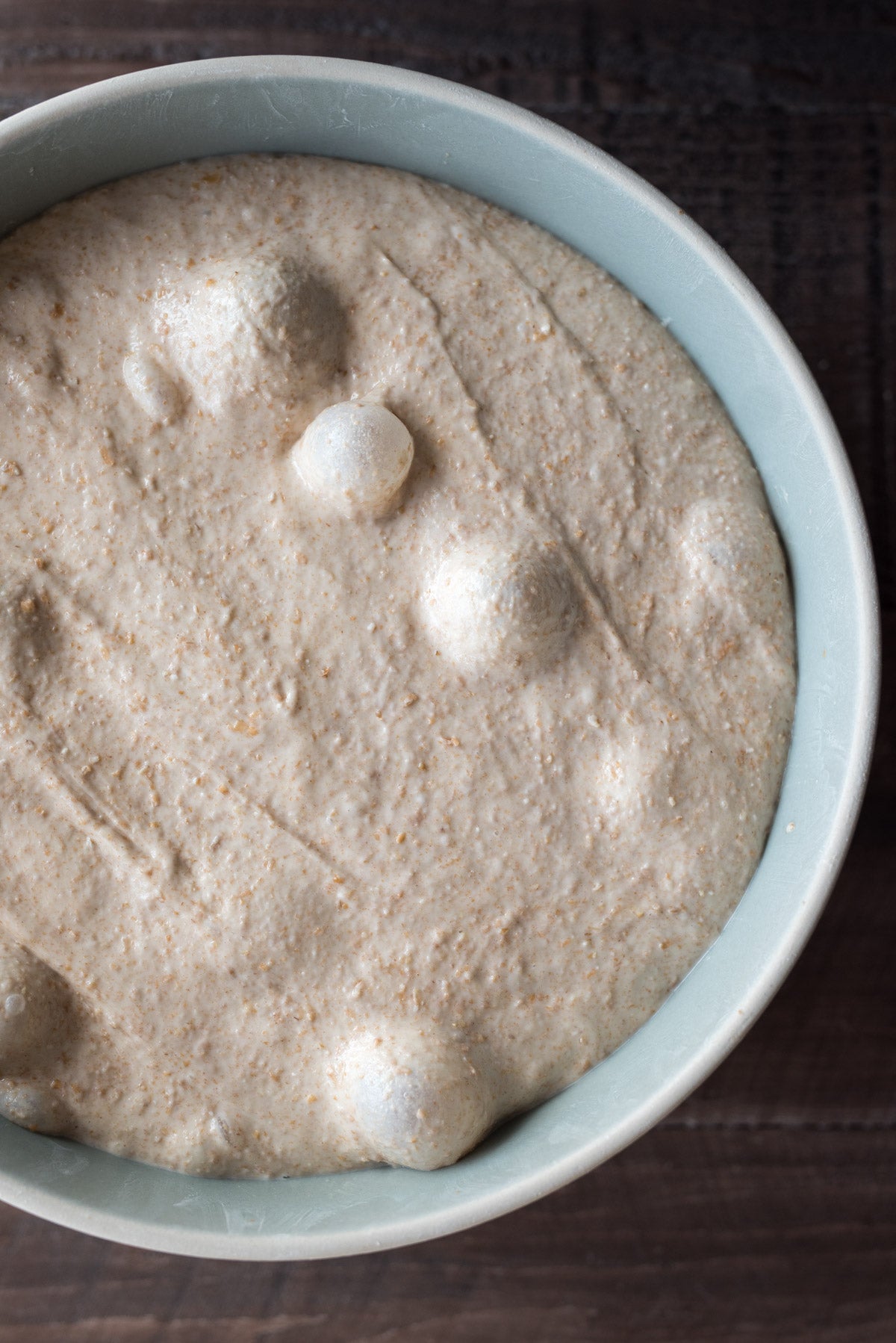
Leave the dough to rise for the remainder of the 3 hours, until you see bubbles on the top and below the surface, and the edge where the dough meets the container is domed slightly. The entire dough should jiggle when shaken.
Dump the dough from the bulk container to an unfloured work surface. Using a bench knife and floured hand, gently divide and pre-shape the dough into two taut rounds on the counter.
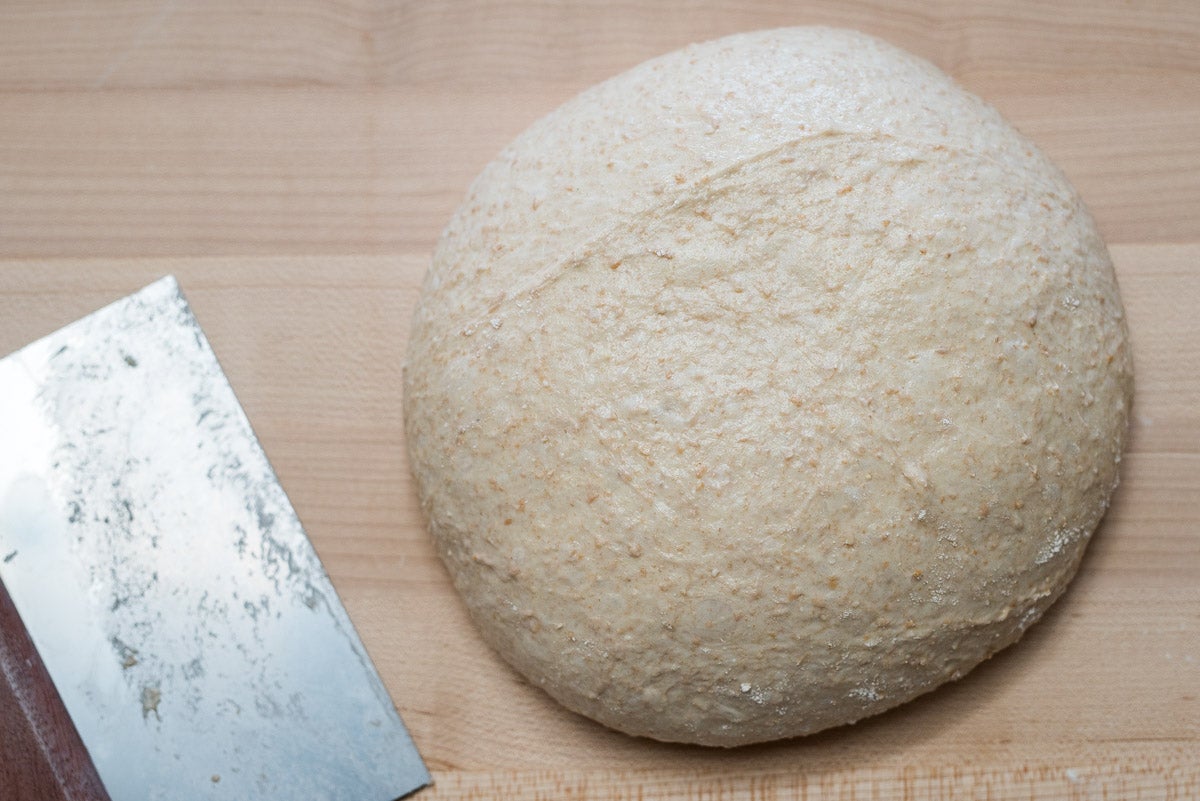
Let the dough rest 25 minutes uncovered. During this time, prepare two proofing baskets (or bowls) lined with towels dusted with all-purpose flour.
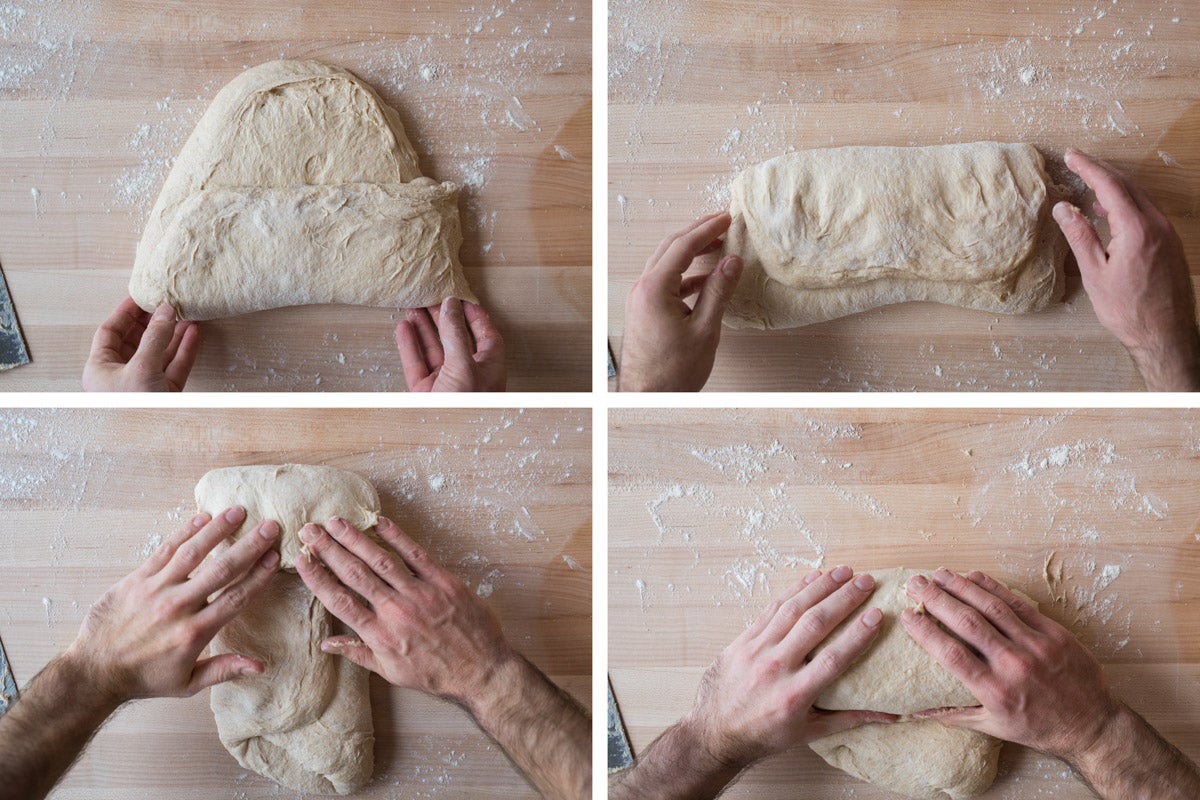
Working with one round at a time, liberally flour the work surface and the top of the resting dough. Using floured hands and a bench knife, flip one round over onto the floured surface and fold the top half up and over to the middle, and the bottom half up and over the recently folded top. You’ll have a long horizontal rectangle sitting in front of you.
Turn the rectangle 90º and grab a small portion of the top; pull up and fold over a little bit, pressing down to seal. Take the rolled top and continue to gently roll it downward toward your body with two hands working together. As you do each roll and work your way down the vertical rectangle, use your thumbs to gently press the dough into itself.
Once rolled up, transfer the shaped dough to the prepared baskets. Cover the proofing baskets with plastic and let proof overnight in the fridge for 14 to 16 hours.

The next day, preheat your oven with a baking stone inside for one hour at 500ºF.
Once preheated, remove your dough from the fridge, unwrap, score with a sharp blade (I like one single slash from top to bottom at about a 30º angle), and load into the oven. Turn the oven down to 475ºF and bake for 20 minutes with steam.*
*I steam my oven using an oven roasting pan containing tightly rolled kitchen towels and another pan containing food grade lava rocks. Add the pan with lava rocks to the oven while preheating. Once the oven is preheated, boil 1 to 2 cups of water and pour over the rolled kitchen towels; place the pan of towels into the oven. Then, carefully toss 1 cup ice cubes in the pan with the rocks. If you shaped your dough as a boule, you could bypass the steaming pans and bake your dough in a large Dutch oven or combo cooker. See here for even more oven steaming techniques.
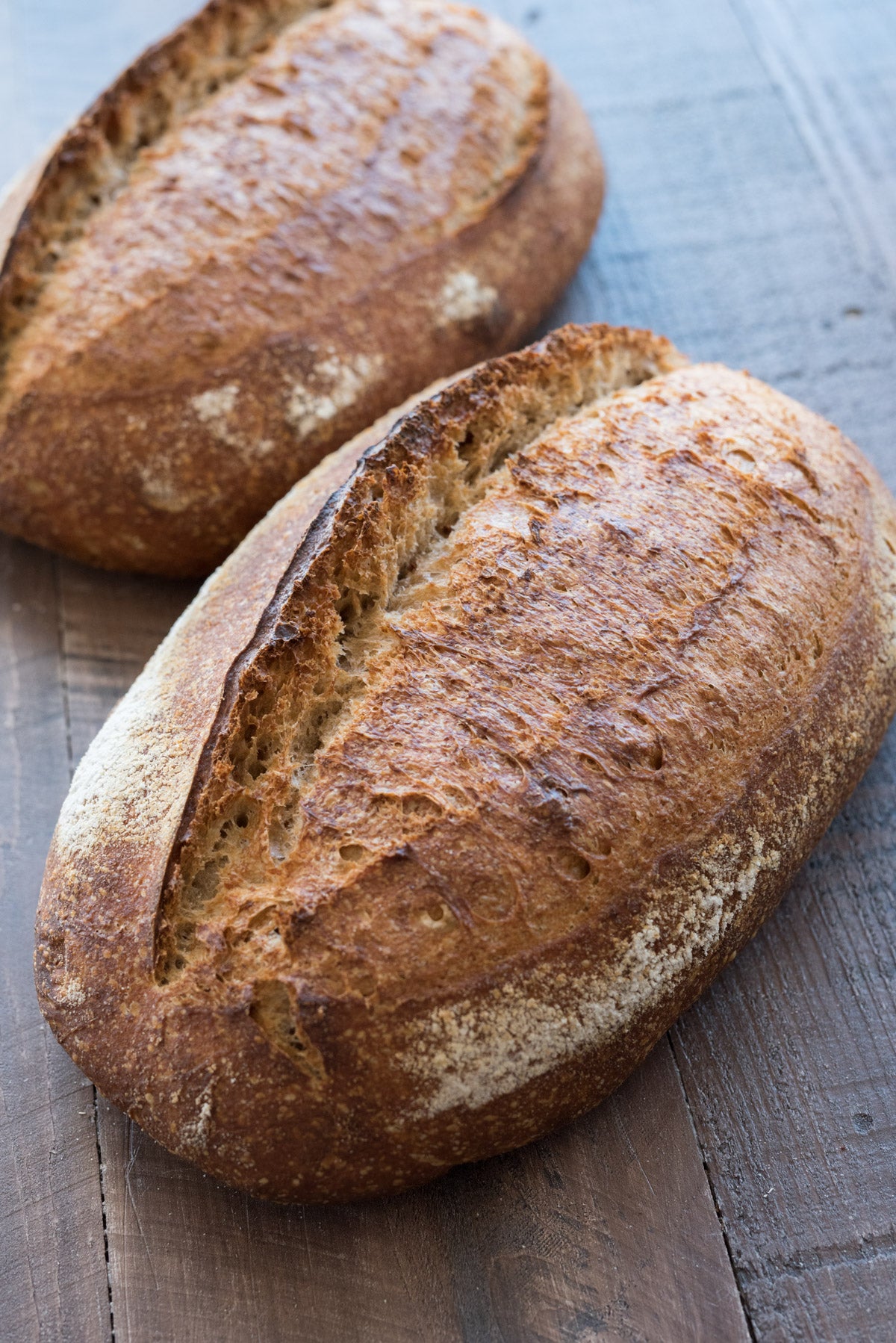
After 20 minutes, reduce the heat to 450ºF, vent the steam from the oven (remove steaming pans or the lid of your Dutch oven), and bake for an additional 30 minutes, or until done. The interior temp should be over 210ºF, and crust should be well colored. Remove the bread from the oven and let cool for 2 to 3 hours on a rack before cutting.
See the recipe for Fresh-Milled Spelt Sourdough Bread.
Check out our inaugural post in this series, in which Martin Philip, baker for King Arthur Flour, explains why fresh-milling flour is so important to him and how to bake a fresh-milled miche.